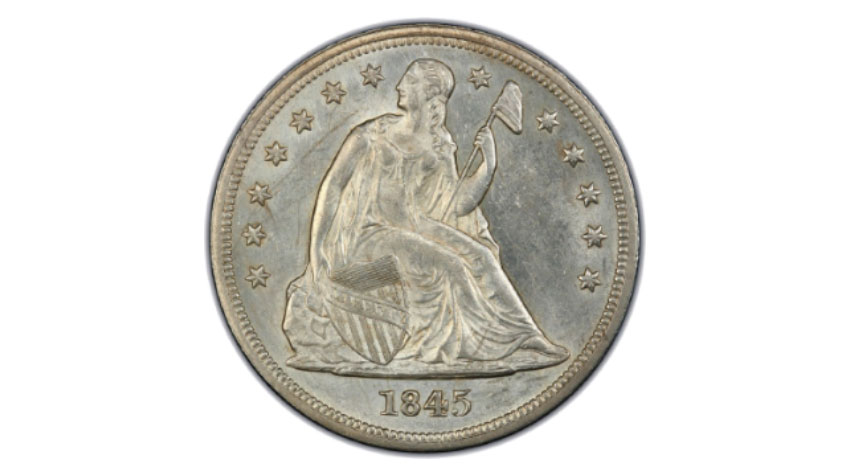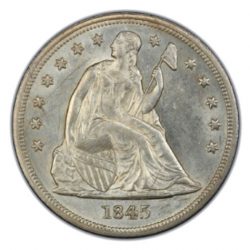Bring in and Sell in your Seated Liberty Dollar in Las Vegas & Henderson
History
The Seated Liberty dollar is a dollar coin that was struck by the United States Mint from 1840 to 1873 and designed by its chief engraver, Christian Gobrecht. It was the last silver coin of that denomination to be struck before the passage of the Coinage Act of 1873, which temporarily ended production of the silver dollar for American commerce. The value of the coin during its mintage was one U.S dollar, ($1.00), it weighed approximately 26.73 grams, with a diameter of about 38.1 mm, the edge is needed, and the coin is 90% Silver, and 10% copper, so there is about 0.77344 troy oz of 90% Silver in the coin. The mintmarks are located under the eagle, O, S, CC If there is no mint mark then it was minted in Philadelphia, as coins minted there during this time had no mark. This is just one very brief background on the thousands of coins out there!
The Mint Act of 1792 made both gold and silver rightful delicate; determined weights of every equivalent to a dollar. The United States Mint struck gold and silver just when investors provided metal, which was returned as a coin.
The fluctuation of market costs for commodities implied that either valuable metal would likely be overvalued as far as the other, leading to hoarding and melting; in the decades after 1792, it was typically silver coins which met that destiny.
In 1806, President Thomas Jefferson formally requested all silver dollar mintage ended, however, creation had not happened since 1804.
Throughout the following quarter century, the silver coin generally struck for bullion investors was the half dollar. In 1831, Mint Executive Samuel Moore asked for that President Andrew Jackson lift the confinement against dollar coin generation; the president obliged in April of that year. Despite the endorsement or approval to strike the coins, no silver dollars were printed until 1836.
Gobrecht Dollar
The Gobrecht dollar, minted from 1836 to 1839, was the first silver dollar struck of course by the United States Mint since the generation of that denomination was authoritatively ended in 1806. The coin was struck in little numbers to decide if the reintroduced silver dollar would be generally welcomed by people in general.
Afterward, in 1835, Mint authorities started arrangements for a progression of silver dollars which, dissimilar to the 1804 dollar, were proposed to enter flow so as to decide if the section would be generally welcomed by the general population. In June 1835, Moore surrendered his post as chief and was supplanted by Robert M. Patterson.
Presently, Executive Patterson moved toward two surely understood Philadelphia artists, Titian Peale and Thomas Sully, to make a design that would be utilized to upgrade the majority of the American coins then in production. Mint Chief Engraver Kneass arranged a sketch in view of Patterson’s origination yet soon endured a stroke, abandoning him somewhat crippled.
Following Kneass’ stroke, government authorities endorsed Patterson’s urgent request that Philadelphia medallist Christian Gobrecht be employed quickly to satisfy the obligations of engraver; Director Moore asked for the same prior to his resignation, yet no move was taken immediately.
Related Category:
To know the value of your Seated Liberty Dollar, bring it to Nevada Coin Mart for a free verbal appraisal and evaluation today!











































